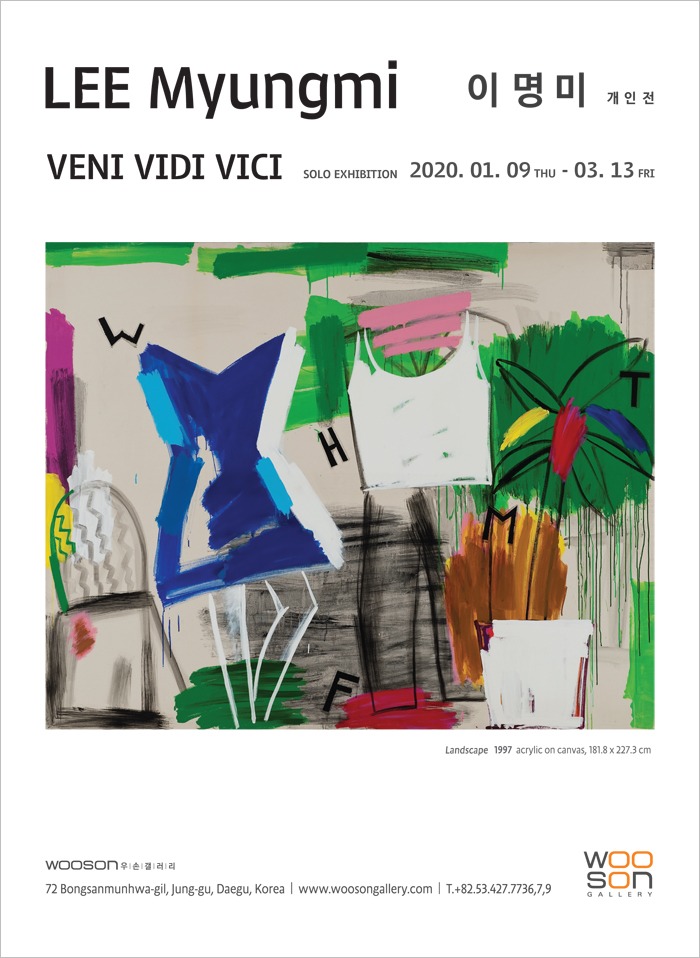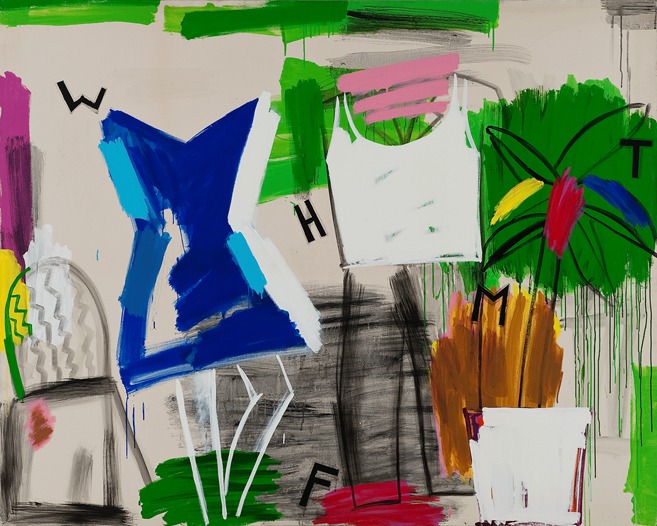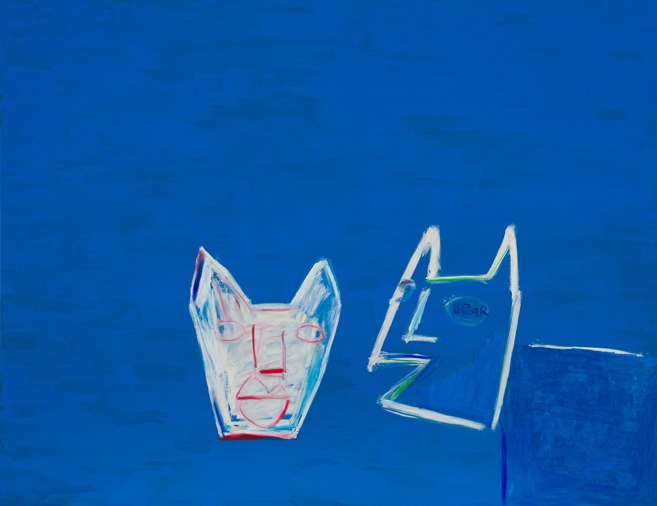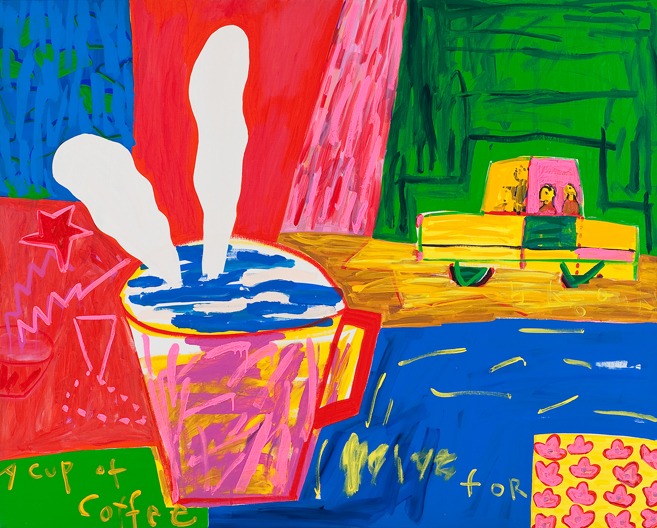
| Period| | 2020.01.09 - 2020.03.13 |
|---|---|
| Operating hours| | 10:30-19:00 |
| Space| | Wooson Gallery/Daegu |
| Address| | 72, Bongsanmunhwa-gil, Jung-gu, Daegu, Republic of Korea |
| Closed| | Sunday |
| Price| | Free |
| Phone| | 053-427-7737 |
| Web site| | 홈페이지 바로가기 |
| Artist| |
|
정보수정요청



|
|
Exhibition Information




Right after graduating from the Department of Painting at Hongik University in 1972, Lee Myung-Mi actively participated in the national exhibition,< Angdepangdang Exhibition>, <The Seoul Contemporary Art Festival>, and <The Korean Experimental Artist Exhibition>, and began her career early on. Her presence stood out in a male-dominated system when she participated as a founding member of the Daegu Contemporary Art Festival and the youngest female artist, which was an important turning point in Korean contemporary art in 1974. On the other hand, <Ecold Seoul>, which was founded in 1975, was the first Korean panel to introduce a system in which members of the committee were to nominate exhibitors to collect the trends of Korean painters at that time. Following the huge trend of art history dominated by contemporary artists would have been a safe path for young artists in their mid-20s who would not be isolated from the art world. In fact, by the mid-70s, Lee Myung-mi had produced a monochrome-style experimental work using properties, such as burning a sponge or attaching vinyl to a canvas, but at some point she had no more place to go or have any fun. Entering the late 70s, Lee Myung-Mi finally took a bold departure from the existing art trend that valued logical concepts, building a new conversational language based on her own sensibilities and intuition and paving the way for a pleasant sense of artistic expression, which was the beginning of 'PLAY'. 'PLAY' has been used as a title for numerous individual exhibitions since it was put on display at Lee Myung-Mi’s first solo exhibition at the Grotch Gallery in Seoul in 1977, including the title of her work, and is an important working element and a source of life until more than 40 years later. Lee Myung-Mi’s 'Play' was a refreshing reminder of post-modernism that suggested the freedom of monochrome painting and concept art in the black-and-white era of monochrome painting and concept art, suggesting an exceptional color and reason, as if he had set up conceptual theories first and celebrated the liberation from utopian ideas that approach theories instead of precede. This is because Lee Myung-Mi’s own work, which varies according to circumstances and conditions, and her accidental, discontinuous and incomplete attributes are in the context because it is an entity that exists in detail, not in an autonomous, abstract way out of all customs and forms. So, for her, play is that she is not afraid of the unexpected coming tomorrow in the increasingly diverse and complex conditions of life, and the positive for coincidence means a positive for the world and life. The exhibition’s title ‘Veni vidi vici’ is none other than a generous tribute to Lee Myung-Mi’s strong passion and affirmative attitude toward life. In Lee Myung-Mi’s works, all elements of everyday life form a conversational language, ranging from living beings such as animals, people and plants to those with social meanings such as home, clothing, food, furniture, and even numbers and letters. Today, when science and technology becomes the standard for all scales and quantifies values, Lee Myung-Mi expresses ordinary things in everyday life that lose value in society and are left out as simple and obvious as a child without perspective on colorful colors, suggesting the linguistic function of images, such as the pattern of life born in the age, rather than the reproduction of things through an easily accessible surface. And Lee Myung-Mi’s 'TEXT,' which appears in combination with such symbolic images, is not a paradox of the image of 'This is not a pipe' written next to Magritte’s pipe, but rather a reference to or a situation that occurs in the picture. As such, Lee Myung-Mi’s works seem to be looking at the world with a root-minded attitude that goes back to the innocent little child’s emotions, have pop art elements that express the material of everyday life in colorful, repetitive patterns, and have expressed the essence of life in a subjective sensibility and form rather than universal truth, but are not limited in any genre, but not limited in any sense of sovereignty. Visual and linguistic understanding of objects also cross the boundary between the two and raise questions about the narrative ability and structural meaning of conversation and language through Lee Myung-Mi’s unique intellectual 'PLAY,' which aims to be free from both textual concepts and visual images. Here, we can often find similar traditional origins in the past as Lee Myung-Mi's play imitates life, but as all play changes with the times, we see the modern appearance of traditional painting in Lee Myung-Mi's works because the driving force to create new values is the same as the principle of play that must be shaped and reconstructed continuously in the stream of the times through reevaluation of traditional values. In this sense, it may be natural for Korean art critics to think about Lee Myung-Mi because she cannot be included in any particular art form. However, even trying to include artists in a particular art form in the postmodern era is perhaps an outdated idea. To this day after modernism, the postmodernism era is not isolated in one era, but is continuously reconstructed in a social context, and Lee Myung-Mi’s work clearly reveals the essence of the artistic spirit of the period.
